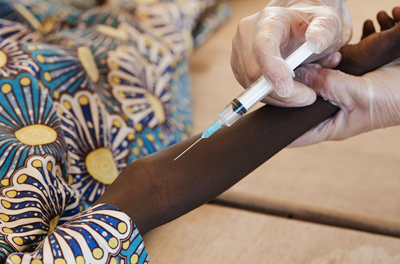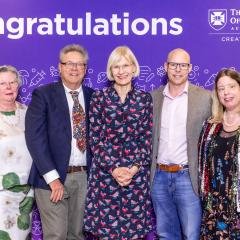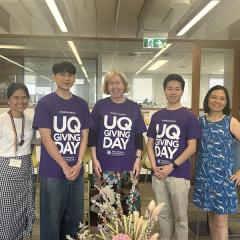
A little-known virus is causing a public health crisis for Indigenous Australians.
Human T-lymphotropic virus type 1 (HTLV-1) is a sexually transmitted retrovirus that causes lifelong infection and, in approximately 10 per cent of cases, leads to aggressive disease. These include a highly fatal blood cancer called adult T-cell leukemia/lymphoma (ATLL), and a progressive neurodegenerative condition known as HTLV-1-associated myelopathy/tropical spastic paraparesis (HAM/TSP).
Despite being the first human retrovirus ever discovered (identified in 1980) HTLV-1 remains astonishingly neglected in terms of medical research and drug development, with no approved vaccines or effective antiviral therapies available anywhere in the world.
A global virus with local impact
Globally, HTLV-1 is estimated to infect between 10 and 20 million people. While endemic clusters exist in parts of Japan, the Caribbean, South America, and Africa, nowhere is the burden more severe than in Central Australia. In some Indigenous communities, prevalence exceeds 40 to 50 per cent, making it the highest recorded rate of HTLV-1 infection on Earth. This is not a historical anomaly but a present-day public health crisis; one that continues to unfold largely out of sight of the national research, policy, and funding agenda.
HTLV-1 affects the health, dignity, and longevity of Indigenous Australians. The virus is very likely to weaken immune function and is associated with increased susceptibility to chronic lung disease, bronchitis, kidney failure, and recurrent infections. These outcomes likely contribute to the reduced life expectancy seen in Central Australian Indigenous populations. Compounding the clinical toll are the psychological and social consequences: individuals living with HTLV-1 frequently experience stigma, disrupted relationships, and barriers to forming families which further deepens cycles of disadvantage and marginalisation.
An epidemic in the shadows
Unlike HIV, HTLV-1 has received comparatively little research attention or pharmaceutical investment. This is due, in part, to the virus’s concentration in economically and politically marginalised communities, which results in an absence of market driven development. No effective antiviral agents, no preventative vaccines, and no disease-modifying therapies are available. This silence in the face of suffering is no longer tenable. Australia must take ownership of this epidemic and invest in solutions that are grounded in both scientific excellence and health equity.
UQ research creating change
The University of Queensland is exceptionally well placed to lead the development of a vaccine for HTLV-1. Renowned for its global partnerships, advanced facilities, and proven track record in translational research, UQ brings together world-class expertise in viral immunology and vaccine design.
At the Australian Institute for Bioengineering and Nanotechnology, Professor Keith Chappell, Dr Jake O’Donnell, Dr Noushin Jaberolansar, and PhD student Aaron Netto specialise in designing and testing next-generation vaccines. Their work utilises the Molecular Clamp2 technology that stabilises viral proteins in their native shape, enabling the immune system to mount a strong, targeted response. This platform has already produced multiple safe, thermostable, and cost-effective vaccine candidates. Two Molecular Clamp vaccines have completed successful Phase I clinical trials, and another entered trials in 2024. These have demonstrated both safety and scalability also with preliminary indicators of efficacy. With this proven technology and experienced team, UQ is uniquely equipped to develop an effective vaccine to combat HTLV-1 in Australia.
The Molecular Clamp is particularly well suited to HTLV-1 vaccine development. HTLV-1 entry into host cells is mediated by viral envelope glycoproteins, which undergo conformational changes during infection. Stabilising these proteins using Clamp2 technology offers a strategic advantage in eliciting robust neutralising immune response; an approach that has proved effective in other viral systems. Importantly, the Molecular Clamp is a fully Australian innovation, backed by deep institutional knowledge and advanced translational infrastructure at UQ, including state-of-the-art protein production, immunogenicity testing, and regulatory expertise.
Restoring health and hope
Investing in HTLV-1 vaccine development is a moral and national responsibility. The burden of this virus falls disproportionately on Indigenous Australians, and addressing it aligns with Australia's commitment to health equity, Indigenous self-determination, and Closing the Gap. Moreover, it presents an opportunity to lead globally in solving a neglected tropical disease using homegrown science. A UQ-led vaccine initiative would also serve as a platform for community-led engagement, co-design, and ethical research practice. With longstanding relationships with Indigenous communities, health organisations, and regional clinics, UQ is well positioned to conduct culturally safe, community-driven research that places Indigenous voices and priorities at the centre.
How you can help
Australia cannot afford to ignore a viral epidemic afflicting some of its most vulnerable citizens, particularly when the tools to fight it are already within reach. With targeted investment, collaborative partnerships, and Indigenous leadership, a vaccine against HTLV-1 can be developed, potentially capable of changing the course of this disease and restoring health and hope to the affected communities.
You can be at the forefront in the fight against HTLV-1. UQ is currently seeking philanthropic support to progress our research into a vaccine for the virus. To have a conversation about making a gift, please contact Anthea Barry, Advancement Manager (Faculty of Science) on +61 450 525 734 or via a.barry4@uq.edu.au.
Written by Dr Jake O’Donnell, Research Fellow at UQ’s School of Chemistry and Molecular Biosciences and a member of the National Aboriginal Community Controlled Health Organisation (NACCHO) HTLV-1 Research Taskforce and the International HTLV-1 PrEP Working Group.



